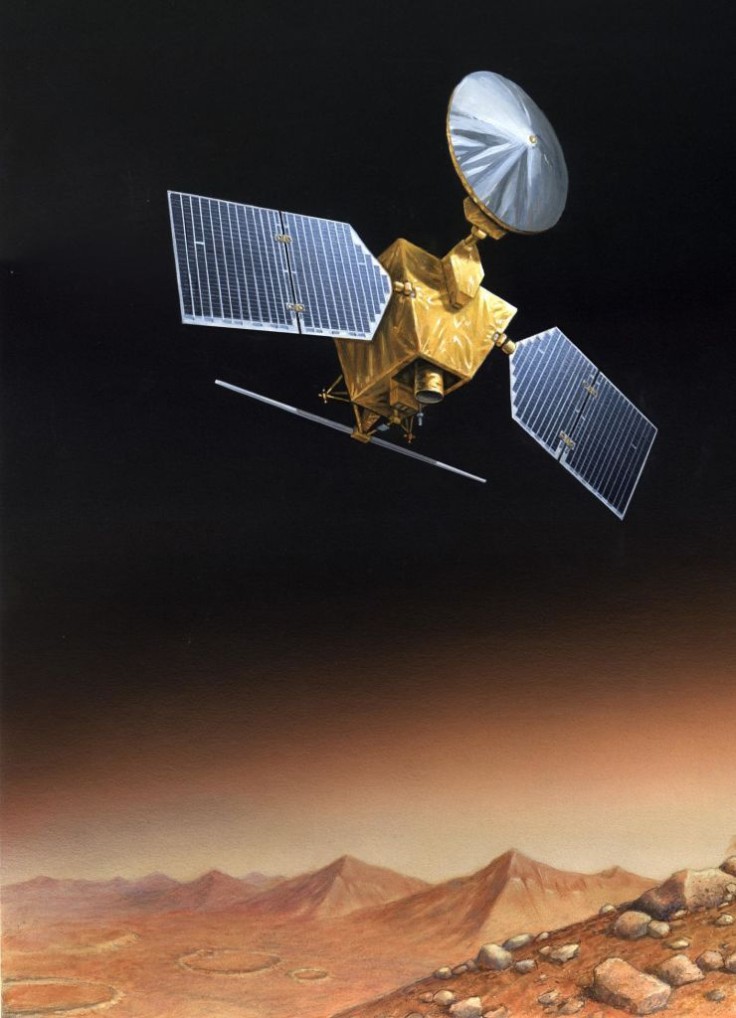
A NASA satellite that has been orbiting Mars for 15 years has sent back one fascinating snap of the Red Planet's strange geography.
NASA's Mars Reconnaissance Orbiter, which has been transmitting detailed images of Mars' volcanoes, dried-up lakes, valleys, and other geographical sites, had brought back a new, jaw-dropping photo of an odd-looking, unique crater on the Red Planet's surface, Mashable noted in a report.
Our Mars Reconnaissance Orbiter spied interesting details in this crater, which is just over half a mile (nearly one kilometer) wide. Wind-blown ripples atop likely sedimentary layers reveal wind patterns inside the crater. More: https://t.co/Y8VWQ9tmfd pic.twitter.com/meGHPrrJ4j
— NASA Mars (@NASAMars) November 30, 2021
The over a half-mile wide Martian crater, which was believed to have resulted from an impact with an asteroid or comet, is certainly a wonderful, exquisite sight presenting seemingly artistic, psychedelic patterns. It presents an apparent Earth-like phenomenon, with winds blowing sand and soil generating ripple-like diverse patterns, called Aeolian ripples, on the crater floor.
As seen on the top right quadrant of the crater, ripples seemed to have been formed on top of a mesa or flat-topped hill.
NASA Mars Exploration Seeks Evidence of Past Life, Safe Refuge for Humans in Red Planet
As the Mars Reconnaissance Orbiter explores the Red Planet from above, robotic rovers are investigating the ground terrain. NASA's Perseverance Rover is currently in search for past clues of microbial life in Mars' emptied lakebeds and waterways that works in tandem with the Mars Ingenuity Helicopter. The mission, which also collects rock and soil samples and prepare for possible human exploration, is currently checking out Mars' "South Seitah" geologic unit of the Jezero crater to discover those possible ancient life forms on the Red Planet, NASA said in a blog post.
Read Also : Even Mars Have Worms! NASA Reveals Images From The Red Planet's Version Of Frozen South Pole
NASA's Curiosity Rover, on the other hand, is looking at possible subsurface habitats that could provide safe refuge for humans on Mars.
These images from the orbiter were made possible by NASA's High Resolution Imaging Experiment (HiRISE) camera aboard the spacecraft operated by the University of Arizona in Tucson. NASA's Jet Propulsion Laboratory at Caltech in Pasadena, California, oversees the Mars Reconnaissance Orbiter Project for the U.S. space agency's Science Mission Directorate in Washington, D.C.
Other Images Taken by Orbiter HiRISE Camera
Apart from this amazing crater, the orbiter had taken images of the Martian surface that showed a possible aftermath from a cosmic event. Parts have been pulled apart and smashed together in other areas. There are some images sent by the orbiter that showed a ridge had formed when the ground was pushed together, thus forming a wrinkle, NASA's Jet Propulsion Laboratory posted on its website.
Such "wrinkled edges" have been seen across Mars, and likewise on the Moon and Earth, serving as evidence of ancient forces that shaped how the planets look today.
Earlier this year, the Mars Reconnaissance Orbiter brought back images of ice sheets at the Red Planet's south pole. It also spotted clays near the ice, which scientists have said are the source of radar reflections that were previously interpreted as liquid water.
Zooming 186 miles (300 kilometers) above the Martian surface, the orbiter utilizes the HiRISE camera to probe the crater, wrinkled edges, and ice sheets, among others.









